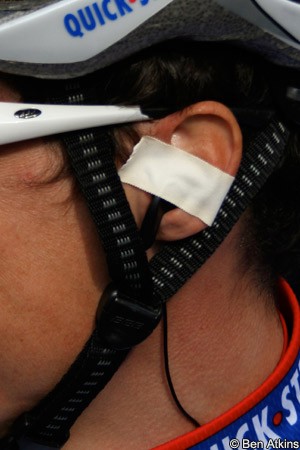Flanders Classics sides with teams’ organisation in radio debate
 Tomorrow’s Ronde van Vlaanderen will see cameras mounted onboard team cars for the first time, which the race organiser says will make it “possible for the television audience to witness the interaction between riders and their team cars”.
Tomorrow’s Ronde van Vlaanderen will see cameras mounted onboard team cars for the first time, which the race organiser says will make it “possible for the television audience to witness the interaction between riders and their team cars”.
The cars of the race’s main contenders, Fabian Cancellara (Leopard Trek), Tom Boonen (Quick Step), Philippe Gilbert (OmegaPharma-Lotto), Thor Hushovd (Garmin-Cervélo) and Nick Nuyens (Saxo Bank-SunGard) will each be equipped with two cameras, whose images will be constantly relayed via a dedicated airplane flying above the course.
With this move Flanders Classics, the race organiser, has clearly taken sides in the debate between the teams (AIGCP) and the International Cycling Union (UCI). The organisation agrees that the use of technology can help to make the sport more attractive to viewers.
“Until now, organizers and teams did not see each other as partners, said Flanders Classics organiser Wouter Vandenhaute. “As a new organizer I would like to use a totally different approach. I am convinced we have to work closely together in order to contribute to a great future for cycling.”
The teams, who once again present a united front in the issue of radio communications, are also pleased with the idea; the act of relaying team/rider communications to television viewers being one of the ideas presented by the pro-camp for radios.
“We believe cycling fans want to ‘live’ the race drama, strategy and excitement from the inside. Technology should help them get even more out of our shared passion for the sport,” reads a joint statement from the teams. “Live cameras on riders and in team cars is an important step in the right direction. There are more steps cycling needs to take to increase fans enjoyment. We hope other race promoters will follow this example.”
While the idea is an interesting one, the big reason for having two-way radios between cars and riders is that it removes the need for physical interaction between the two. The vast majority of communication between the team captains and their directors will be over the radio and so the excited viewer may not be in for quite the treat they expect.